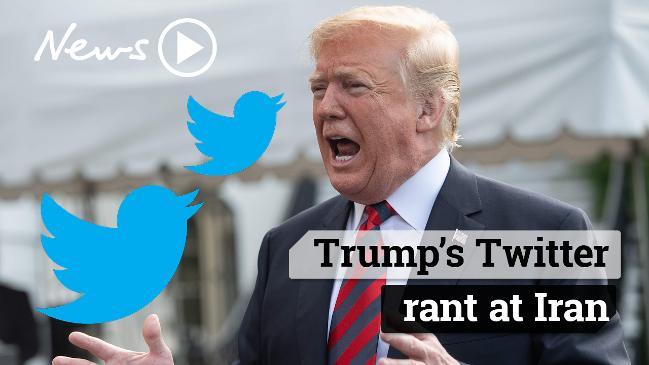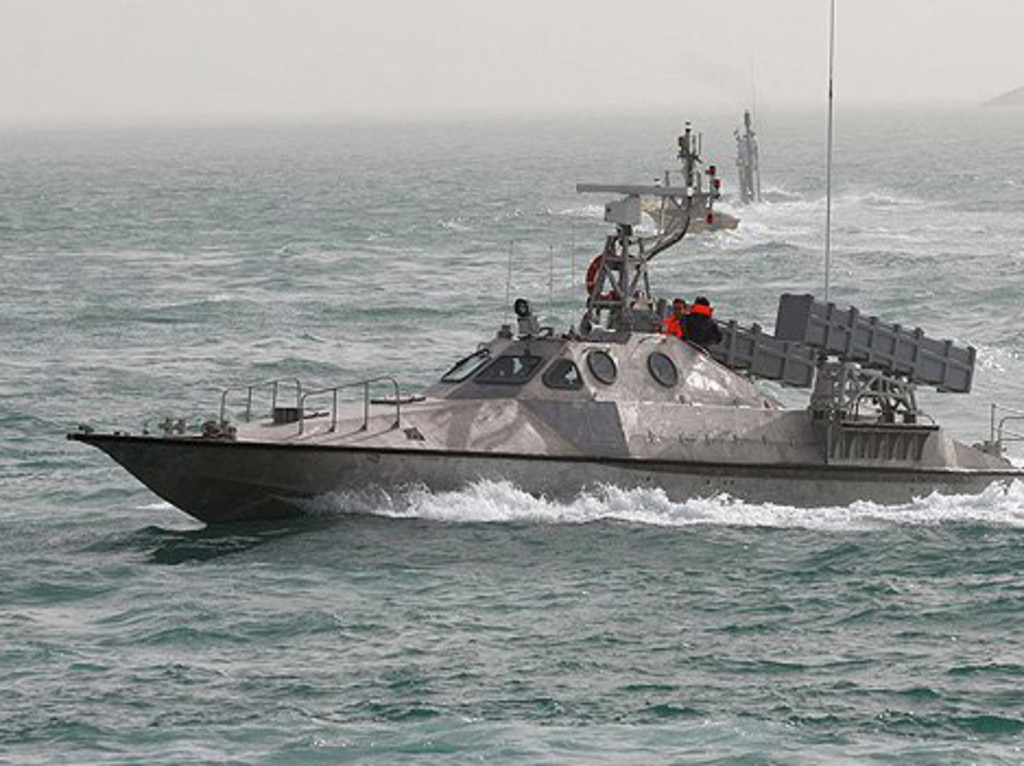Iran’s unsubtle threat to Donald Trump: ‘Embargo our oil, we’ll choke yours’
THE world is watching closely as Iran launches a swarm of warships. Its message: get tough with us, and we’ll choke the world’s oil supply.

IF the world’s economy had a jugular vein, it would be the Strait of Hormuz. It’s a narrow channel linking the Persian Gulf to the Arabian Sea. And through it flows the lifeblood of the world — oil.
And Iran has it within its grip.
US President Donald Trump has unleashed his characteristically fiery rhetoric at the Shia state, as well as abandoned an international nuclear pact while threatening sanctions.
“To Iranian President Rouhani,” Trump recently tweeted. “NEVER, EVER THREATEN THE UNITED STATES AGAIN OR YOU WILL SUFFER CONSEQUENCES THE LIKES OF WHICH FEW THROUGHOUT HISTORY HAVE EVER SUFFERED BEFORE. WE ARE NO LONGER A COUNTRY THAT WILL STAND FOR YOUR DEMENTED WORDS OF VIOLENCE & DEATH.”
Take a look at USS The Sullivans (DDG 68) conducting a routine transit through the Strait of Hormuz! https://t.co/5hSqYwvjCK
— U.S. 5th Fleet (@US5thFleet) July 16, 2018
Iran’s foreign minister replied in kind: “COLOR US UNIMPRESSED: The world heard even harsher bluster a few months ago. And Iranians have heard them — albeit more civilised ones — for 40 yrs. We’ve been around for millennia & seen fall of empires, incl our own, which lasted more than the life of some countries. BE CAUTIOUS!”
President Trump ordered new sanctions against Iran on Monday. Iran’s leadership has replied by threatening to shut down the Strait if it is barred from exporting oil.
Yesterday, Iranian naval commander, Rear Admiral Hossein Khanzadi, said his military was ready to close the strait if ordered to do so. These exercises demonstrate it is willing and capable.

SEA SWARM
Iran has deployed a swarm of 100 gunboats on military exercises.
These will mass within the narrow waterway over the coming days.
It’s a not-so-subtle reminder of its ability to choke the world’s economy.
The timing of the exercise is unusual, as it appears to be similar in scale and nature to a drill that ordinarily happens later in the autumn. But fresh sanctions ordered by the US are likely to have spurred an early demonstration of Iran’s naval strength.
RELATED: Does Australia’s new frigate stand a fighting chance?
The presence of so many vessels alone will likely slow the movements of supertankers carrying crude oil. Navigation will be a nightmare.

“We are aware of the increase in Iranian naval operations within the (Pesian) Gulf,” Captain Bill Urban, the military’s Central Command spokesman, said.
“We are monitoring it closely, and will continue to work with our partners to ensure freedom of navigation and free flow of commerce in international waterways.”
Enforcing his words is the destroyer USS The Sullivans. Allied British and French warships are also stationed in the region.
Missing is the usual US nuclear-powered aircraft carrier. The USS Harry S. Truman and its escort force returned home last month. There is a US airfield nearby, however, at Bahrain.
Some 18 million barrels of oil move through the Strait of Hormuz each day. That's about 30 per cent of the world’s total supply. Even a temporary halt in shipping could lead to a rapid spike in global energy prices.
Defence Secretary Jim Mattis last week warned closing the Strait of Hormuz would be regarded as an “attack on international shipping.”
“It would have, obviously, an international response to reopen the shipping lanes with whatever that took, because the world’s economy depends on that energy, those energy supplies flowing out of there,” he told reporters.

INTO THE BREACH
Behind the posturing lingers memories of the 1980s Iran-Iraq war when attacks from both sides threatened the shipping which flows through the strait.
Then, in April, 1988, the frigate USS Samuel Roberts struck an Iranian mine laid in the Hormuz channel. The US Navy retaliated fiercely, sinking one Iranian frigate, the Sahand, a gunboat and six military speedboats. Another Iranian frigate was damaged.
Iran is believed to still have more than 5000 mines in stock. And all it needs to put them in place is a fleet of speedboats.
Another spike in tensions occurred in January 2016. The Iranians captured the crew of two small US patrol boats that strayed into Iranian waters. The 10 US sailors were released 24 hours later.
RELATED: Australian warship shoulders the load as US ships break down
So far, US Navy says, there has been no sign of threats against its ships.
Several dozen Iranian ships are reportedly already out on training exercises in the area.
So far, the vessels are mostly small attack boats
The exercises come at a time of increased tension between Iran and the United States.
US officials in recent years have accused both the regular Iranian navy and the Iranian Revolutionary Guards Corps of routinely harassing American warships in the Gulf.
But so far this year, to the befuddlement of some military officials, there have been no such incidents.
The Iranian Revolutionary Guards Corps is a paramilitary force that answers directly to the Islamic republic’s supreme leader.
Follow: @JamieSeidelNews



